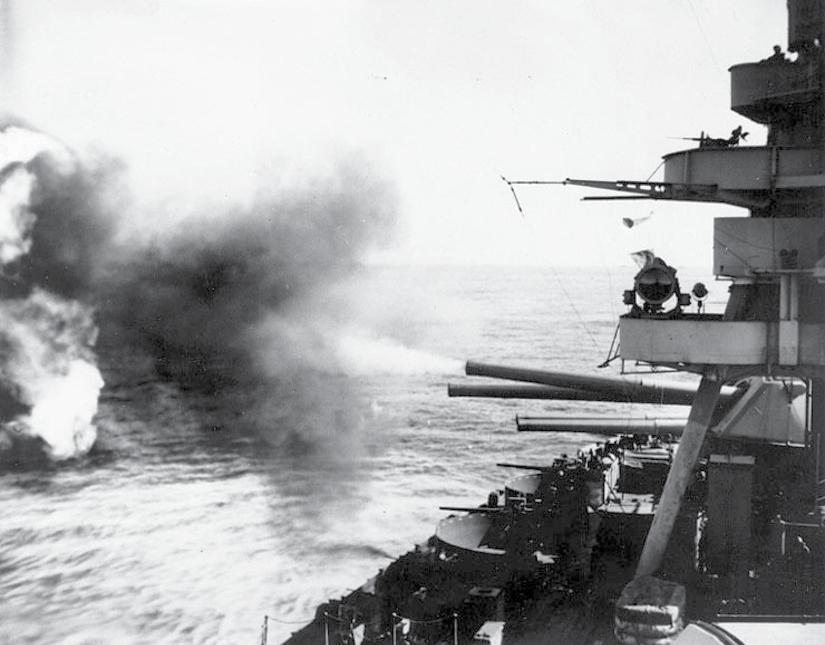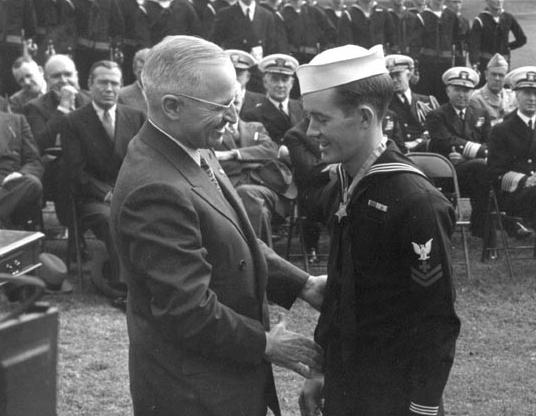
1 minute read
History and Heritage
Uncommon Valor was a Common Virtue

Advertisement

By Commander, Naval Surface Force, U.S. Pacific Fleet Public Affairs
An LCM encounters difficulty near Purple Beach on the southwestern coast of Iwo Jima on 9 March 1945.



Secretary of the Navy James Forrestal confers with operation leaders on board ship (probably USS Eldorado, AGC-11) on 22 February 1945, a few days after the Iwo Jima D-Day. Present are, from left to right: Vice Admiral Richmond K. Turner, USN; Secretary of the Navy Forrestal; Lieutenant General Holland M. Smith, USMC; and Rear Admiral Harry W. Hill, USN. Collection of Fleet Admiral Chester W. Nimitz.
Before attacking Japan, war planners hoped to capture Iwo Jima, and place U.S. bombers within a 750- mile strike range of Japan. The task for doing this fell to the 3rd, 4th and 5th Marine divisions, the Army's 147th Infantry Regiment and the Navy's 5th Fleet.



Personnel, supplies, and various LVTs remain on the beach at Iwo Jima on 25 February 1945. LST-121 and LSM-47 are beached at the shoreline, while LST42 maneuvers behind them.




Fleet Air Photographic Squadron Five, landing ships unloading near Mt. Suribachi, 25 February 1945. Ships seen include LSM-264, LST-724, LST-760, LST-788, and LST-808.

Pharmacist's Mate Second Class George E. Wahlen, USN, Receives the Medal of Honor from President Harry S. Truman during Nimitz Day ceremonies at the White House on 5 October 1945.










